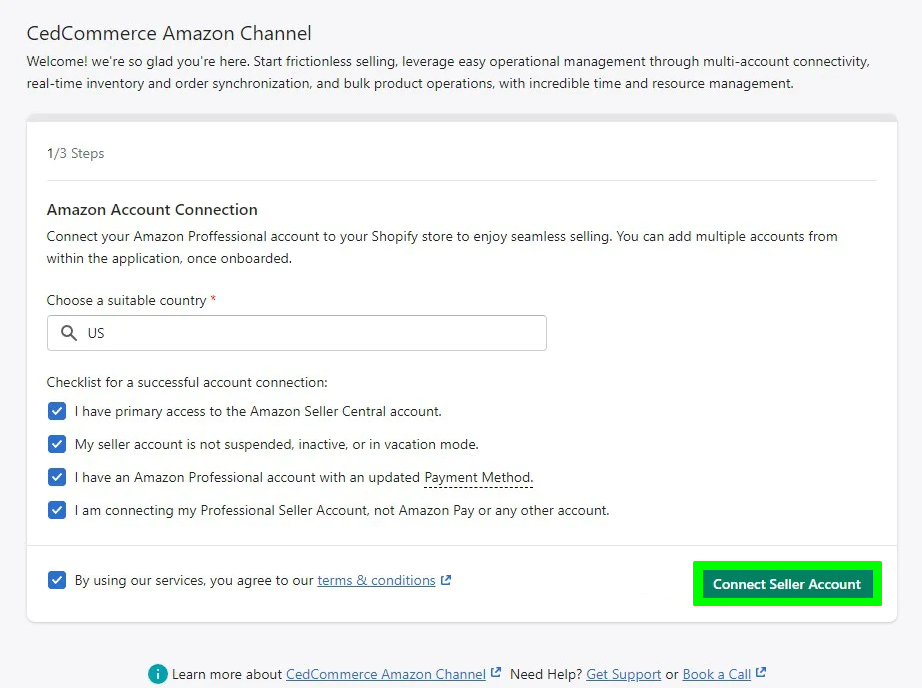Benefits of Shopify Amazon Integration
Ignoring Shopify’s built-in tools, the combination of these two powerhouses may provide tremendous benefits to any Shopify shop owner, whether they have extensive experience selling a lucrative product line or are just starting out with a modest catalog.
- By connecting Shopify and Amazon, you may reach a wider audience and raise awareness of your business. You may take use of Amazon’s massive organic traffic and massive customer base to possibly enhance sales and income since Amazon is the largest online retailer in the world with millions of active customer accounts.
- Maintaining a unified brand identity across your online storefront’s platforms is now easier than ever with the Shopify Amazon integration. This contributes to the development of a unified brand image and to the growth of faithful brand followers.
- By linking your Shopify shop with Amazon, you can automatically update your product listings, inventory, and orders across both services, streamlining your operations.
- Connecting Shopify and Amazon is helpful because it gives you a backup plan in case one of the platforms goes out of business or is temporarily unavailable. By spreading your e-commerce activities over many platforms, you may reduce the likelihood of experiencing interruptions in selling.
Steps to follow for Shopify Amazon Integration

Amazon Professional Seller Account
If you want to sell on Amazon using your Shopify store, you must have an existing Amazon professional seller account. Thus, the first step is to register. To join Amazon’s Seller Central and create an account, click on Sign Up. Furthermore, you need to have some of the data available for easy account creation like business contact info, bank account information, tax information, etc.
Request approval
After creating your Amazon professional seller account, it’s time to verify that the categories you’ve chosen comply with Amazon. If you don’t comply, amazon may remove your listing or suspend your account. Thus, add the categories to the review. If this category doesn’t need review, go on to the next one. If the category needs permission, you may submit one by clicking the button labeled “Request Approval” and then follow the on-screen instructions. Thereafter, wait for Amazon’s assessment and acceptance of your category request. This process might take some time, but you’ll be notified in your seller account either way.
Optimize the store
Your Shopify store’s performance will greatly improve after optimization for Amazon integration. The most crucial step here is designing a Shopify shop that not only accurately reflects your business but also drives sales on Amazon. Also, make sure that the names, descriptions, and pictures of your products are search engine and Amazon-friendly. Make sure the items you sell on Amazon can actually be found in your Shopify shop, and that you have enough of them in stock to fulfill any Amazon orders that come your way.
Add Amazon as sales channel
This is the main step for Shopify Amazon integration. You need to add Amazon as a sales channel on your Shopify app store. Thus, go to add apps> Shopify app store> Search CedCommerce Amazon Channel. This app is rated 4.8 stars on the app store and fits best for integrating Amazon into Shopify. Click on Add app > Add sales channel.
Thereafter, to link your Shopify shop to your Amazon seller account, go to the sales tab and then click Connect Seller Account. Shopify allows you to manage your Amazon presence by configuring the app settings to your company requirements, including inventory management choices and fulfillment methods.
Create Listings
To edit your product listings, go to the app you just installed in your Shopify Admin and click on the Listings tab. In order to make your Shopify goods accessible for sale on Amazon as a new Amazon seller, you will need to add them to Amazon listings.
Select the goods you want to sell on Amazon and match them up with the appropriate Amazon product categories and listing choices. This may be done individually or in large batches. If you already have listings on Amazon, you may connect them to your Shopify shop. Choose the products from Amazon that you wish to connect with Shopify. The program will then connect the appropriate Shopify items to the relevant Amazon listings.
Thus, when a customer places an order, the data pertaining to that order, such as the items purchased, shipping address, and customer information, will be synchronized with your Shopify account through the app you installed. Orders placed using the app or the Shopify Admin may be seen and managed in the corresponding sections.
Conclusion
As e-commerce continues to evolve, the Shopify Amazon integration offers an opportunity for entrepreneurs to thrive in an ever-competitive landscape. Whether you’re a small business owner looking to reach a broader audience or an established brand seeking to boost your online presence, the integration of these e-commerce platforms can be a game-changer.
FAQs
Is it necessary to have an Amazon Seller account to integrate with Shopify?
How do I optimize my product listings for both Shopify and Amazon?
What are the costs associated with Shopify Amazon integration?
Can I fulfill Amazon orders using my Shopify inventory?
How do I handle customer support and returns when selling on both platforms?
Shivangi is a passionate Copywriter at Alian Software with expertise in technical copywriting. She shares information that is easy to understand regarding business, technology, and trends.